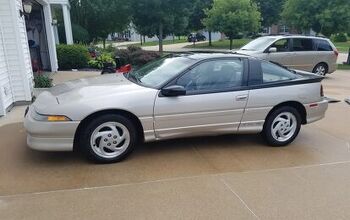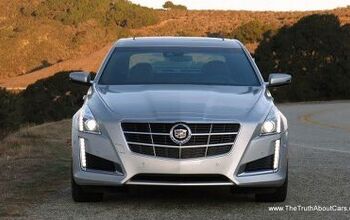Carmageddon 2.0

Think everything will be hunky-dory by, well, 2012? (Watch the movie.) Fitch Ratings thinks the U.S. auto industry won’t get back on its feet anytime soon. Worse, the industry may be caught in an “airline-style” cycle of repetitive bankruptcies because of weak sales and a glut of production capacity. It is unusual for a U.S. airline (and many elsewhere) to not be in bankruptcy or not have been at some point.
Amongst the rating agencies, Fitch is the only halfway good one. They were the lone voice that had warned against the dangers of the collateralized debt obligations that brought the world to the brink of disaster.
In a report cited by Reuters, Fitch says that high fixed costs, the lengthy periods required to develop new products and chronic overcapacity will leave the industry “littered with failures—plants, product lines, brands and companies.”
Even in peak conditions, companies would not generate enough cash to repair their balance sheets, leaving them vulnerable to severe financial stress in downturns. Fitch calls it “boom and bust cycles without the boom.”
According to Reuters, “the Fitch report was one of the rating agency’s starkest outlooks yet on an industry battered by recession, slow-selling products and crushing labor and retiree costs.”
Fitch thinks 2010 may see a 7.8 percent rise in U.S. light vehicle sales to 11.1 million units. Even that will leave much of the industry bleeding cash in 2010. Fitch sees more government money going down the black hole in 2010. Fitch thinks hell will freeze over before GM or Chrysler could successfully access the equity markets. You will continue making payments to GM or Chrysler even if you don’t own their cars.
Fitch prognosticates that a number of suppliers that have emerged from bankruptcy will go belly-up again. “The manufacturers could also fall into the same pattern.” If there is a double-dip recession or spike in gas prices, all bets are off.
In the fourth quarter of 2008, capacity utilization for motor vehicles and parts stood at 53.6 percent, says the Federal Reserve (2009 numbers are scheduled to be published in March 2010.) In an industry where capacity utilization below 80 percent portends gloom and doom, using only half of the capacity is a guaranteed trip to Jonestown. The rest of the world is not much better off. According to a CSM Worldwide study, global capacity utilization is 65 percent: The plants of this world could make 86m light vehicles, 30m more than the market demands. The healthy thing to do would be to hand industrial policy to Darwin: Survival of the fittest. Instead, governments the world over, led by the USA, are keeping their barely used auto industries on life support, even if it looks more and more like preserving the body of Vladimir Lenin.

Bertel Schmitt comes back to journalism after taking a 35 year break in advertising and marketing. He ran and owned advertising agencies in Duesseldorf, Germany, and New York City. Volkswagen A.G. was Bertel's most important corporate account. Schmitt's advertising and marketing career touched many corners of the industry with a special focus on automotive products and services. Since 2004, he lives in Japan and China with his wife <a href="http://www.tomokoandbertel.com"> Tomoko </a>. Bertel Schmitt is a founding board member of the <a href="http://www.offshoresuperseries.com"> Offshore Super Series </a>, an American offshore powerboat racing organization. He is co-owner of the racing team Typhoon.
More by Bertel Schmitt
Latest Car Reviews
Read moreLatest Product Reviews
Read moreRecent Comments
- Honda1 Unions were needed back in the early days, not needed know. There are plenty of rules and regulations and government agencies that keep companies in line. It's just a money grad and nothing more. Fain is a punk!
- 1995 SC If the necessary number of employees vote to unionize then yes, they should be unionized. That's how it works.
- Sobhuza Trooper That Dave Thomas fella sounds like the kind of twit who is oh-so-quick to tell us how easy and fun the bus is for any and all of your personal transportation needs. The time to get to and from the bus stop is never a concern. The time waiting for the bus is never a concern. The time waiting for a connection (if there is one) is never a concern. The weather is never a concern. Whatever you might be carrying or intend to purchase is never a concern. Nope, Boo Cars! Yeah Buses! Buses rule!Needless to say, these twits don't actual take the damn bus.
- MaintenanceCosts Nobody here seems to acknowledge that there are multiple use cases for cars.Some people spend all their time driving all over the country and need every mile and minute of time savings. ICE cars are better for them right now.Some people only drive locally and fly when they travel. For them, there's probably a range number that works, and they don't really need more. For the uses for which we use our EV, that would be around 150 miles. The other thing about a low range requirement is it can make 120V charging viable. If you don't drive more than an average of about 40 miles/day, you can probably get enough electrons through a wall outlet. We spent over two years charging our Bolt only through 120V, while our house was getting rebuilt, and never had an issue.Those are extremes. There are all sorts of use cases in between, which probably represent the majority of drivers. For some users, what's needed is more range. But I think for most users, what's needed is better charging. Retrofit apartment garages like Tim's with 240V outlets at every spot. Install more L3 chargers in supermarket parking lots and alongside gas stations. Make chargers that work like Tesla Superchargers as ubiquitous as gas stations, and EV charging will not be an issue for most users.
- MaintenanceCosts I don't have an opinion on whether any one plant unionizing is the right answer, but the employees sure need to have the right to organize. Unions or the credible threat of unionization are the only thing, history has proven, that can keep employers honest. Without it, we've seen over and over, the employers have complete power over the workers and feel free to exploit the workers however they see fit. (And don't tell me "oh, the workers can just leave" - in an oligopolistic industry, working conditions quickly converge, and there's not another employer right around the corner.)































Comments
Join the conversation
And even if everything else was equal, the N.American car industry never came to grips with the decline of the baby boomer demographic. In the 90s, the boomers were in their prime earning years; with lots of money and likely to own two cars. When these same people retire, guess what? They typically own one car, and that one car lasts longer since the now retired boomers don't drive as much. David K. Foot warned Canada in the 90s that overcapacity problems were developing in the auto industry and would be unwise for Ontario to become reliant on auto manufacturing. Nobody listened. From a Canadian perspective, this sort of total policy planning failure is just another example of how Canada's industrial development plan in general has totally failed. But instead of, y'know, demonstrating some leadership and actually admitting this, Canadian leaders are obsessing over embalming procedures. It's certianly easier cheaper to look after corpses then the next generation, that's for sure.
It will be a long time, if ever until car sales once gain go above 15M SAAR. Even if they do the days of the domestics selling Tahoes, Grand Cherokees and Expeditoins with 10-15K of gross margin shall never return.